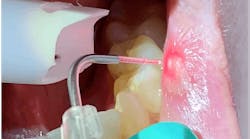Look beyond price: Consider other terms involved in buying and selling a dental practice
May 30, 2013
This is the second part in a two-part series.
Dentists who want to either sell or buy a dental practice, as well as their brokers, often put their energy into the purchase price at the expense of other equally important issues. In many cases, the purchase price represents the selling dentist’s retirement fund, or the down payment on the purchase of another practice. On the other hand, the buying dentist thinks about his or her future cash flow. After satisfying the monthly loan payment obligations, student loan payments, and all other practice expenses, will the buyer have enough “take-home” pay to survive — net of taxes? Frequently, the parties’ fixation on price causes the purchase structure and other issues to be relegated to mere details to be worked out after the parties shake hands. Alternatively, if the parties do not agree on a price, they may decide not to proceed with the acquisition — without looking at the purchase structure and other deal-points. Here are some examples of significant issues that are just as (or possibly even more) important as the price tag. The tax effect of the transaction is the most important factor, and this issue is summarized in a previous article by these authors. Click here to read Part I. In addition to the price tag and the tax consequences of the purchase structure, numerous other terms can have a significant impact on both parties’ bottom lines. The devil, as they say, is in the details.Payment terms. Cash is king. It is more valuable for the seller to be paid in cash than in installments over time. A seller may (and should) be willing to take a lower price if he or she is paid in cash. Conversely, the buyer may (and should) be willing to pay a higher price if the seller is willing to “be the bank” and accept a promissory note as payment. In addition, a lien on the practice assets and a personal guaranty from the buyer (and, if permitted, his or her spouse) can make the promissory note more palatable to the seller. There must also be an analysis of the present value of money when payments are made over time. All-cash deals tend to provide the best net tax treatment to the seller and eliminate any risk of non payment or a lower effective purchase price based on the present value analysis.Liabilities/accounts payable. The parties should understand whether the purchase price will be decreased to reflect any liabilities or payables that the buyer may assume. At the very least, it is common for the purchase price to be modified to reflect items that are either prepaid or paid in arrears (e.g., utility charges, personal property taxes, and ongoing prepaid dental contracts assumed by the buyer).Accounts receivable. Will the buyer also purchase the receivables? Certainly, if the buyer will have the right to keep post-closing collections, a higher price may be warranted. Of course, it can be a bit of a struggle to establish the value of the receivables, and it is doubtful they are worth their full face value. Alternatively, if receivables are not included, the seller may be willing to pay the buyer an administrative fee for collecting the seller’s receivables. This temporary cash flow could help the practice. From a goodwill perspective, it is preferable for the buyer to collect the accounts receivable so that patients do not perceive any division between the seller and the buyer.Lease terms. Ultimately, the buyer must understand his or her future cash flow. A low purchase price may not compensate for an above-market lease. The buyer must also understand how much the rent will increase per year and whether he or she must pay taxes, insurance, and maintenance expenses. Otherwise, the buyer’s actual cost of the lease may be significantly higher than anticipated. If the seller owns the property, he or she must also understand the monthly anticipated revenue and whether the buyer could have an option to purchase the property. How many years are left in the lease? Are there renewal terms under the lease, and if so, at what cost? It is critical to understand and evaluate these details in connection with each dental practice acquisition.CONSIDER READING:Thursday Troubleshooter: How do I tell my referral sources I'm not retiring?ALSO BY MR. LEVIN AND MR. BOGART:Hiring an Associate: Employee or Independent Contractor?Closing costs. Who will pay the sales taxes and other closing/transfer costs? Who is responsible for paying the broker/transition specialist? If there is a mailing announcing the sale to the patients and referrers, who pays for those expenses?Supplies. Typically, the seller will leave supplies for the buyer at “customary levels.” Otherwise, the buyer will incur significant start-up costs. The acquisition agreement should be clear on this point, and on whether the price will be adjusted for the cost of the inventory. This is tremendously important in implant and orthodontic practices and other specialty practices, where the costs of supplies are very high.Transition of goodwill. The buyer needs the seller to assist in the transition of the goodwill to the buyer. The seller’s involvement in this phase can increase the number of patients and referral sources that opt to stay with the buyer. The selling dentist’s physical presence in the office and commitment to actively assisting the buyer with the transition can help make these introductions stick. The selling dentist’s role in this regard cannot be overstated. This is another nonmonetary issue that can make a big difference in the buyer’s bottom line.Restrictive covenants. Ultimately, in most situations, a significant part of any practice acquisition is the purchase of goodwill. As a result, the buyer should seek to protect that goodwill by crafting noncompetition and nonsolicitation provisions that are broad enough to protect the buyer’s investment, but not so broad they could render the provisions unenforceable. On the other hand, the selling dentist will not want to unduly restrict his options after closing. For example, if the selling dentist gets bored and decides to come out of retirement, what can he or she do, and where? By way of illustration, if the seller agrees to a one-year and one-mile noncompetition restriction, the buyer may have overpaid for the seller’s goodwill, as the seller may have the ability to recapture relationships with patients and referral sources. Remember, these restrictive covenants need to apply to more than just patients. They should include referrers, employees, and (in some cases) families of patients.Conclusion In addition to quibbling over the price, it is important for buyers and sellers to thoughtfully consider the structure of the purchase and other terms. Focusing solely on the price of a practice can lead the buyer or seller to overlook other important issues. Many of these issues can be used to bridge the gap between parties who are otherwise unable to agree upon a purchase price.Barry F. Levin is a partner and chair in the business and finance department of Saul Ewing LLP. Philip M. Bogart is a special counsel in the business and finance department of the Saul Ewing LLP Baltimore office. Mr. Levin and Mr. Bogart regularly represent dentists — and the business entities in which clinicians practice — in all aspects of the dental practice structure through and including the structuring, negotiation, documentation, and implementation of associateships or employee arrangements, partnership arrangements, acquisitions, and sales and mergers of mature practices. They are also cochairs of Saul Ewing's Dental Transitions Practice. Visit the website at www.saul.com.







